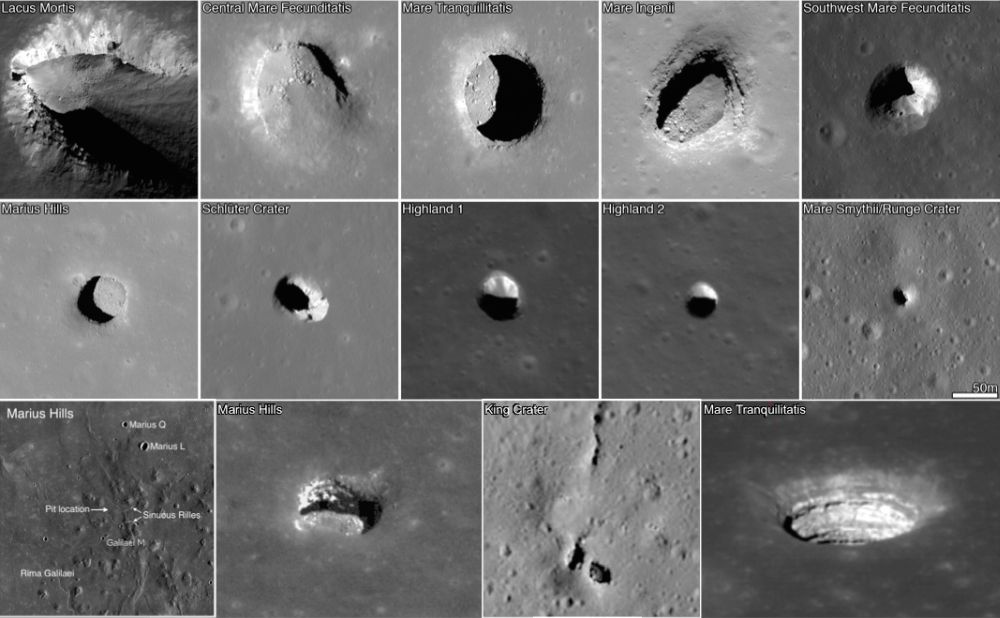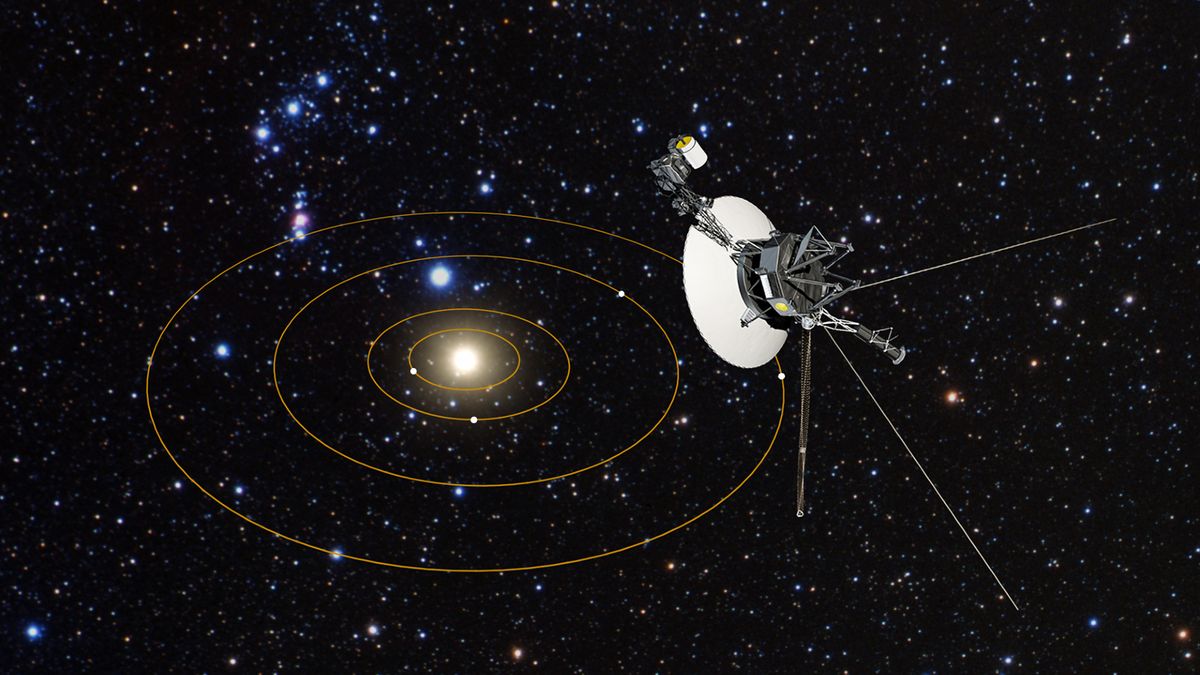OSIRIS-Rex is returning. Here is the NASA webcast for the return and recovery:
Welcome to Tesla Motors Club
Discuss Tesla's Model S, Model 3, Model X, Model Y, Cybertruck, Roadster and More.
Register
Install the app
How to install the app on iOS
You can install our site as a web app on your iOS device by utilizing the Add to Home Screen feature in Safari. Please see this thread for more details on this.
Note: This feature may not be available in some browsers.
-
Want to remove ads? Register an account and login to see fewer ads, and become a Supporting Member to remove almost all ads.
You are using an out of date browser. It may not display this or other websites correctly.
You should upgrade or use an alternative browser.
You should upgrade or use an alternative browser.
Non-SpaceX Specific Exploration Missions Discussion
- Thread starter Grendal
- Start date
Not a Launch Video per se (although it does have a small video clip in the article), but a non-Telsa space event that (in a bit of a reach) linked Telsla in it's headlines, but in a positive way for a change:
Article HERE. The crux of it was that they eschewed lidar for optical cameras to do navigation.
OSIRIS-REx used a Tesla-esque navigation system to capture 4.5 billion-year-old regolith
Article HERE. The crux of it was that they eschewed lidar for optical cameras to do navigation.

Chinese Astronauts May Build a Base Inside a Lunar Lava Tube
China is the latest nation to study lunar lava tubes as locations for bases. They provide natural protection that's impossible to ignore.
 www.universetoday.com
www.universetoday.com
That's cool. My kids went through some lava tubes in Iceland and their pictures were vvery cool.. natural strong underground shelter...
Chinese Astronauts May Build a Base Inside a Lunar Lava Tube
China is the latest nation to study lunar lava tubes as locations for bases. They provide natural protection that's impossible to ignore.www.universetoday.com
Yeah, lava tubes are amazing, partly because the lava flow solidifies in the tube, leaving a nice flat floor. They do have flaws, however, because the ceilings can collapse. The pit craters visible on the Moon are believed to be examples of roof collapses. Then there's the problem of quakes. Moon quakes are usually less than 3 on the Richter scale, but there have been some over 5. That's not good for the structural integrity of rock overhangs, even in low gravity.That's cool. My kids went through some lava tubes in Iceland and their pictures were vvery cool.. natural strong underground shelter...
Now consider the Boring Company operating off-planet.

Why The Boring Company Is The Key To Elon's Mars Colony! — The Tesla Space
What if I told you that the real reason that Elon Musk started the Boring Company was to develop a next generation tunnel boring machine to deploy on the planet Mars and construct his own underground Martian city?
I'm a little surprised that Elon hasn't been doing much with additive manufacturing. Transport a simple printer to your destination and bootstrap from there. Of course, you'd need some kind of infrastructure to provide the printer with raw materials. Automate the whole thing with Optimus.
NASA will never go beyond high school presentations, so I'm really looking forward to an AI that can either textually describe the essential points of a research paper or even generate a video presentation of them. I gave up on NASA presentations a while ago due to the signal/noise ratio - which I have to assume is what works for aspiring high school engineers and scientists.NASA video
(This looks an apropos spot for this)
Drat:

 www.space.com
www.space.com
I'm gonna be bummed if my favorite space probe finally loses it...
Drat:

NASA's Voyager 1 probe in interstellar space can't phone home (again) due to glitch
Right now, the only data the probe is sending back to Earth is binary gobbledygook.
I'm gonna be bummed if my favorite space probe finally loses it...
NASA’s Voyager 1 Is Glitching, Sending Nonsense From Interstellar Space
Does not look hopeful.NASA’s Voyager 1 probe is experiencing a glitch that’s causing it to send a repeating, gibberish pattern of ones and zeroes back to Earth, the agency announced this week. The spacecraft is still able to receive and execute commands sent to it, but it’s unable to transmit back science or engineering data.
After ruling out other possibilities, the Voyager team determined the spacecraft’s issues stem from one of its three computers, called the flight data system (FDS). Last weekend, engineers tried to restart the FDS to see whether they could resolve the problem, but the probe still isn’t returning usable data, according to NASA.
However, both Voyagers have lasted decades beyond their original planned mission, so what they have accomplished is pretty impressive. This is mind blowing;
By today’s standards, the technology aboard the Voyager crafts is ancient. Their computers only have 69.63 kilobytes of memory—about enough to store an average jpeg file. To make room for new observations, they must erase data after sending it to Earth.
“The Voyager computers have less memory than the key fob that opens your car door,” Linda Spilker, a planetary scientist who started working on the Voyager missions in 1977, told Scientific American’s Tim Folger last year.
I have been bummed about this... I'm rather enamored with the Voyagers and the missions.
I've been watching the JPL Voyager Site News page for updates... and being patient as previous issues have some time taken months to resolve...
The good news is that it's still capable of receiving/executing commands it seems.
I've been watching the JPL Voyager Site News page for updates... and being patient as previous issues have some time taken months to resolve...
The good news is that it's still capable of receiving/executing commands it seems.
Electroman
Well-Known Member
But unless you get back a positive affirmation and proof that it executed those commands successfully, you have no idea.I have been bummed about this... I'm rather enamored with the Voyagers and the missions.
I've been watching the JPL Voyager Site News page for updates... and being patient as previous issues have some time taken months to resolve...
The good news is that it's still capable of receiving/executing commands it seems.
TunaBug
Member
Does not look hopeful.
However, both Voyagers have lasted decades beyond their original planned mission, so what they have accomplished is pretty impressive. This is mind blowing;
By today’s standards, the technology aboard the Voyager crafts is ancient. Their computers only have 69.63 kilobytes of memory—about enough to store an average jpeg file. To make room for new observations, they must erase data after sending it to Earth.
“The Voyager computers have less memory than the key fob that opens your car door,” Linda Spilker, a planetary scientist who started working on the Voyager missions in 1977, told Scientific American’s Tim Folger last year.
That amount of memory on Voyager seems like a lot. I would've guessed 16k. I thought the first shuttles had 64k before the electronics were overhauled? What surprised me in that statement is that a key fob would have so much. I'm not sure if that's horrible engineering or that transistors are so cheap?
Maybe the 69.63K number is for backup computers? E.g. Three computers with 23.23K each?
Well there's 3 onboard computers with the telemetry modulation unit (TMU) being the one that the other computers, including the flight data system (FDS) which gathers scientific instrument data, send information to to transmit back to earth. It then has the Computer Command System (CCS) which does command/control and memory management.But unless you get back a positive affirmation and proof that it executed those commands successfully, you have no idea.
The garbled data appears to be the FDS provided data forwarded to the TMU to send. So ostensibly the other non-scientific data (such as flight control and vehicle status from CCS) are coming back ok.
Since the team was able to restart the FDS, I would imagine that's how they did it and were able to verify with the vehicle CCS. And even seeing the garbled data stream stop then successfully resume after a reboot command would be rudimentary validation it had received and executed the command.
Last edited:
That amount of memory on Voyager seems like a lot. I would've guessed 16k. I thought the first shuttles had 64k before the electronics were overhauled? What surprised me in that statement is that a key fob would have so much. I'm not sure if that's horrible engineering or that transistors are so cheap?
Maybe the 69.63K number is for backup computers? E.g. Three computers with 23.23K each?
There's actually 3 computers with redundant units for each, so 6...
I think that memory may be just for the CCS.
NASA has released new photos of Io taken by the Juno spacecraft from just 15,000 km away. They are incredible!
The JAXA SLIM lunar lander mission got within 55m of its targeted landing location, which is amazingly good, but unfortunately during final descent, at 50m above the surface one of its two engines lost power and the lander ended up on its side. That means its solar panels won’t generate enough power to keep it going. It was able to deploy two small probes and one of them returned this photo. Oops!

Fire the thrusters to roll it. If the vehicle is gonna die anyway, give it a good kick.The JAXA SLIM lunar lander mission got within 55m of its targeted landing location, which is amazingly good, but unfortunately during final descent, at 50m above the surface one of its two engines lost power and the lander ended up on its side. That means its solar panels won’t generate enough power to keep it going. It was able to deploy two small probes and one of them returned this photo. Oops!
At least their little deployable rovers did what they were there for.
Eric Berger reports: The amazing helicopter on Mars, Ingenuity, will fly no more
During a flight a week ago, one of its four blades broke. Ingenuity has been an amazing success story. Kudos to Teddy Tzanetos, Ingenuity project manager, and the NASA JPL team that worked to achieve the first powered flight on Mars!
Here is the official NASA/JPL announcement.
During a flight a week ago, one of its four blades broke. Ingenuity has been an amazing success story. Kudos to Teddy Tzanetos, Ingenuity project manager, and the NASA JPL team that worked to achieve the first powered flight on Mars!
Here is the official NASA/JPL announcement.


